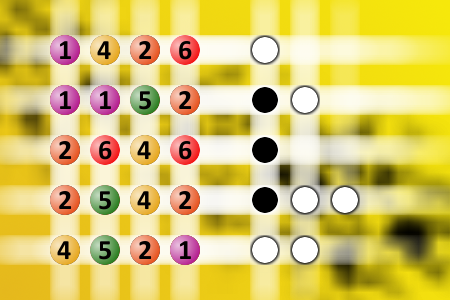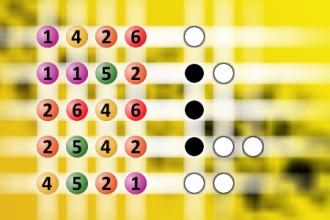Which is a winning combination of digits?
The computer chose a secret code (sequence of 4 digits from 1 to 6). Your goal is to find that code. Black circles indicate the number of hits on the right spot. White circles indicate the number of hits on the wrong spot.Correct answers: 28
The first user who solved this task is Manguexa Wagle.
#brainteasers #mastermind

A little old lady goes into th...
A little old lady goes into the store to do some shopping.She is bewildered over the large selection of toilet paper.
"Pardon me, sir," she says to the store manager,"but can you explain the differences in all these toilet papers?"
"Well," he replies pointing out one brand,"this is as soft as a baby's kiss. It's $1.50 per roll."
He grabs another and says, "This is nice and soft as a bunny,strong but gentle, and it's $1.00 a roll."
Pointing to the bottom shelf he tells her, "We call that our No Name brand, and it's 20 cents per roll."
"Give me the No Name," she says.
She comes back about a week later, seeks out the manager and says,"Hey! I've got a name for your No Name toilet paper. I call it John Wayne."
"Why?" he asks.
"Because it's rough, it's tough and it don't take crap off anybody!"
"Pardon me, sir," she says to the store manager,"but can you explain the differences in all these toilet papers?"
"Well," he replies pointing out one brand,"this is as soft as a baby's kiss. It's $1.50 per roll."
He grabs another and says, "This is nice and soft as a bunny,strong but gentle, and it's $1.00 a roll."
Pointing to the bottom shelf he tells her, "We call that our No Name brand, and it's 20 cents per roll."
"Give me the No Name," she says.
She comes back about a week later, seeks out the manager and says,"Hey! I've got a name for your No Name toilet paper. I call it John Wayne."
"Why?" he asks.
"Because it's rough, it's tough and it don't take crap off anybody!"

